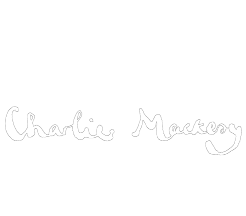EMDR is a structured form of psychotherapy that works with people to help them heal from the impact and symptoms of trauma and difficult life events that challenge mental wellbeing. When we experience these types of events, the body and the mind will hold certain memories and create associated feelings and thoughts which can get stuck or frozen and remain unprocessed. This can make it difficult to move on with life.
With many traumatic life events, the brain can often find a way to process things and recover by itself without any interventions. More often than not, just like physical wound heals naturally, so does the mind. Much of the healing work, processing and brain activity happens during our REM (Rapid Eye Movement) sleep but studies have suggested that REM sleep can also isolate and strengthen negative emotional memories. Occasionally, it can lock an event and associated emotions into place which can cause it to channel its response in an unhealthy way.
The key culprit for this reaction is within the Amygdala, a part of the brain that is an integral part of processing our emotions and is responsible for sensing fear and threat - ‘fight-flight-freeze’. It triggers hormones by sending signals to the hypothalamus and releases them into the bloodstream to be distributed to the rest of the body and this in turn activates the Automatic Nervous System (ANS).
The amygdala influences the way the rest of the brain responds including overriding the prefrontal cortex, our decision making part of the brain, which tempers our learned responses and reactions and causes it to get stuck in position. These memories, which are then stuck within the amygdala, dictate how we then respond to threats, particularly ones which may unconsciously or consciously feel are similar to past experiences.
There are eight phases to EMDR therapy:
In this phase, I assess the client’s readiness and develop a treatment plan. We identify possible targets for EMDR processing and these include distressing memories, current circumstances that seem to cause emotional distress and may include past related events, be it within childhood or adulthood. It’s about identifying possible stressors and identifying any critical incidents. The length of treatment will depend upon the number of traumas identified and the timeline of those. Most events can be treated in under 6 sessions however multiple traumas may require a lengthier treatment.
In phase 2, I work with the client to ensure they have different ways of handling their emotional distress. We look to learn a variety of imagery and stress reduction techniques which the client can use during and between sessions. I explain the EMDR process in more detail so the client will be well informed, relaxed, confident and comfortable during treatment. The goal of EMDR therapy is to produce rapid and effective change while the client maintains equilibrium during and between sessions
Phase 3 – 6: Assessment, Desensitization, Installation, Body scan
In these phases we work towards identified specific target(s) and begin to process them using EMDR therapy procedures and protocols. During these phases we look at negative and positive beliefs, the intensity of the negative emotions associated with the target memories, identify body sensations linked and triggered by the memory whilst simultaneously engaging in EMDR processing using sets of bilateral stimulation. These sets may include eye movements, taps, tones or pulsars. The type and length of these sets are different for each client and during the processing, the client is invited to just notice whatever is going on for them – be it a thought, sensation, image, memory or emotion.
Depending upon the client’s report, we begin to look at focusing in on what is coming up. We continue with repeated sets whilst managing carefully what is occurring in the room and ensuring that the client is kept on track whilst going through the experience.
Once the memory is processed and the distress has been minimised or eliminated, we focus our attention on reinforcing or adjusting the positive beliefs that were identified at the beginning and work on them until they feel totally true for them.
Phase 7: Closure
Here I will ask the client to keep notes during the week which will document any material that may arise as a result of the treatment. We revisit the imagery and mindfulness skills that were practiced earlier in the treatment within phase 2 to ensure the client is easily able to access them in order to find a place of calm and self-sooth.
Phase 8: Re-evaluation
Phase eight reviews the progress made and revisits the treatment plan. Here we look at whether the target memory that has been worked on needs some further attention or if the client has multiple traumas or memories, this phase will identify what they are and the process starts again either to work on the current target or begin with a new one.
EMDR therapy was initially developed in 1987 by the late Francine Shapiro for the treatment of posttraumatic stress disorder (PTSD) but since has been used and proven very effective in helping with many other areas of mental heath including those that suffer distress with:
EMDR is recognised worldwide by many organisations as being an incredibly effective form of psychotherapeutic treatment. Included in this is the UKs own Department of Health & Social Care Department, The National Institution for Health and Care Excellence (NICE) and the World Health Organisation.
For more detailed information on EMDR you can visit the EMDR UK Association; EMDR Europe; EMDR International Association;
Please contact me to arrange your free initial telephone consultation and EMDR therapy sessions.
Charlie Mackesy

Google Overall Rating 5 Stars